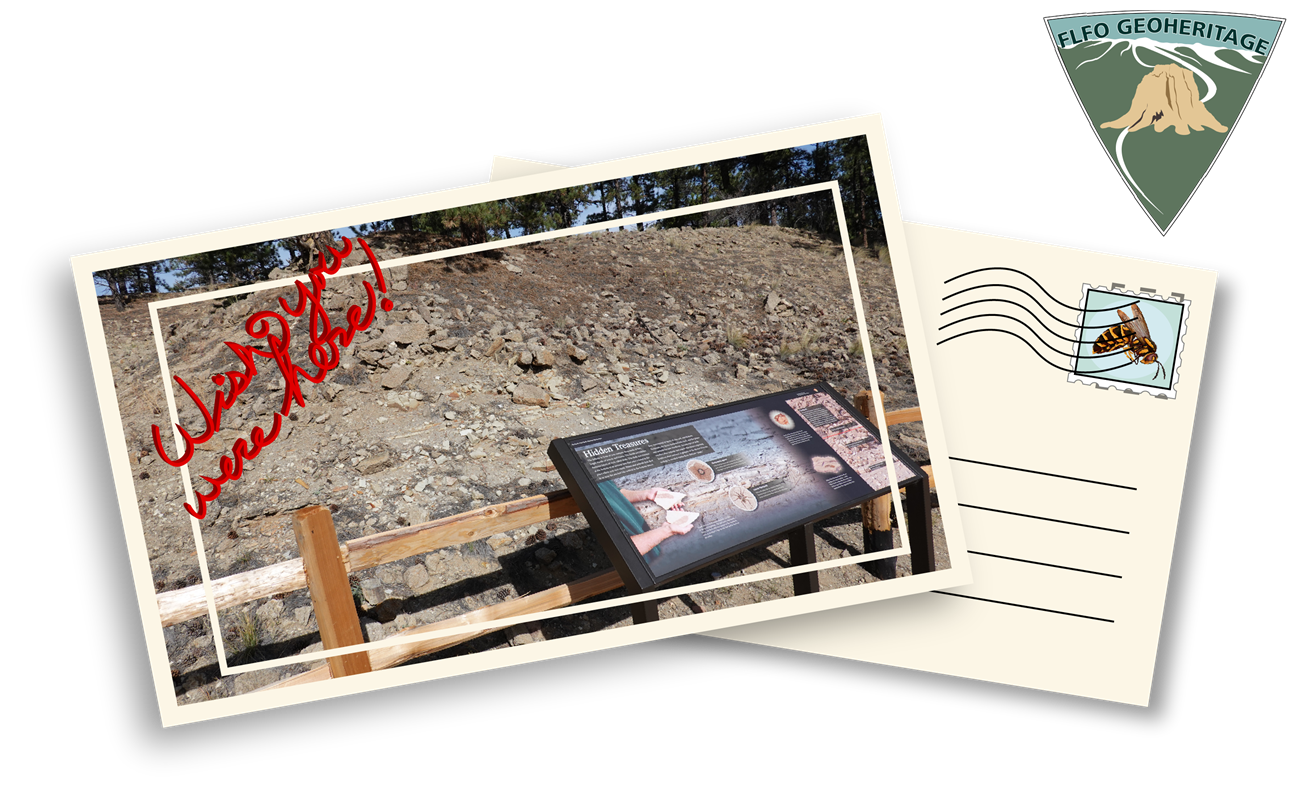
NPS:SIP Mariah Slovacek 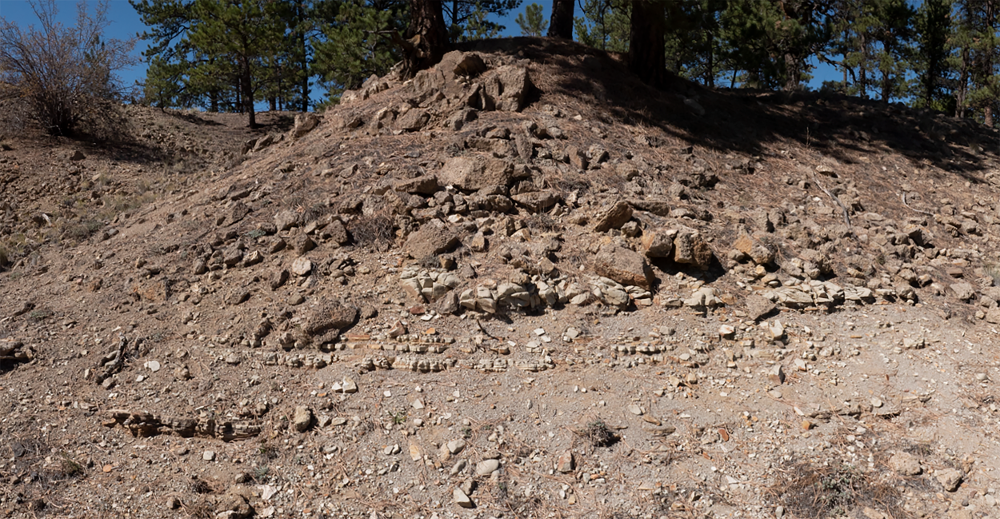
NPS 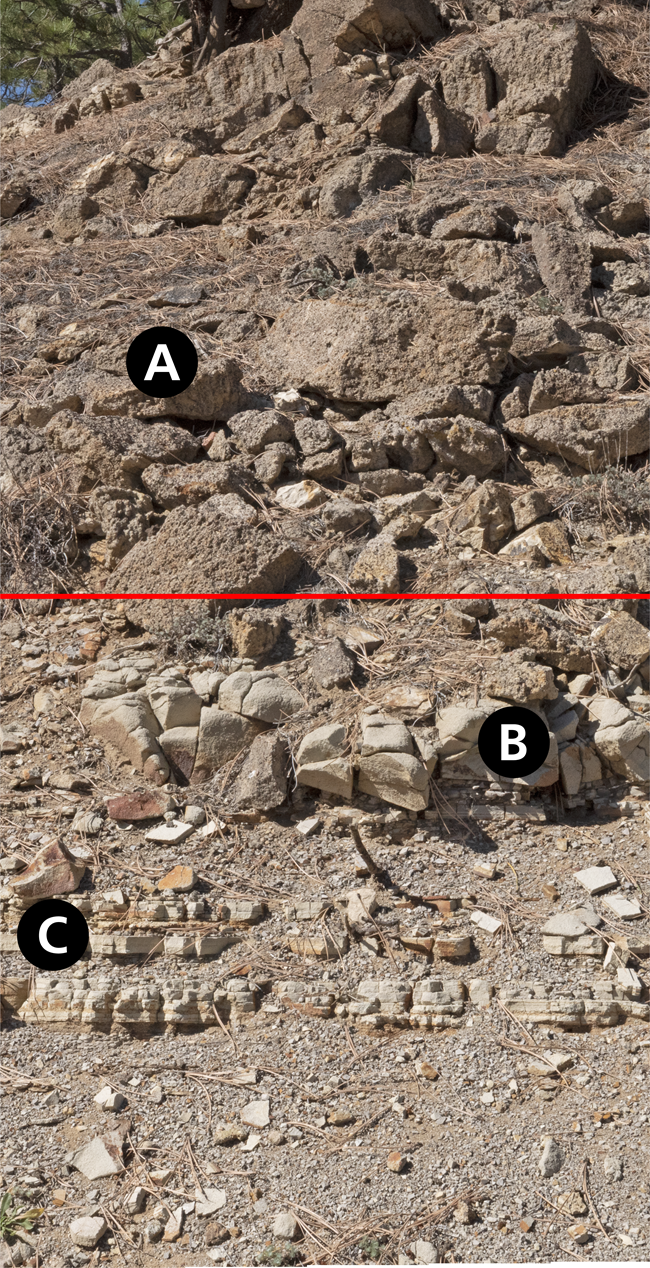
NPS Contact!The outcrop shown here includes a very important geologic contact within the Florissant Formation, shown by the red line. This contact formed when a debris flow settled in the lake to from the caprock conglomerate unit. The debris flow radically disrupted the lake environment and resulted in a distinct contact on the lake bottom with the middle shale unit. The thick, durable conglomerate protects the easily eroded shale. 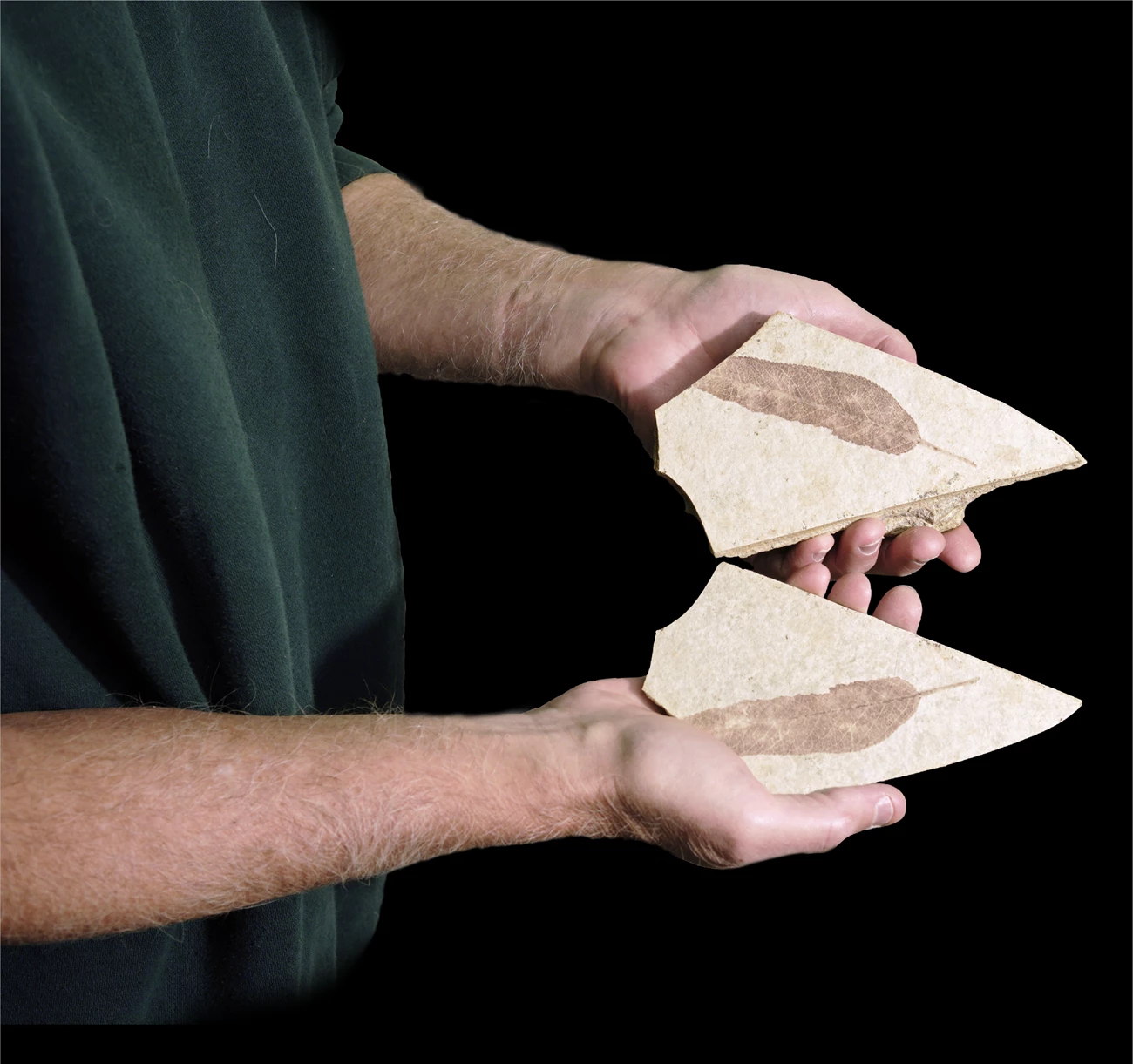
NPS 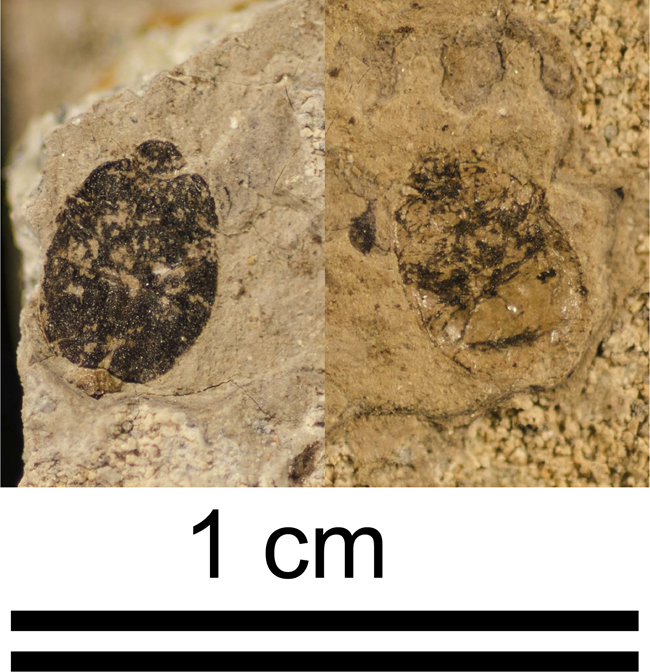
NPS 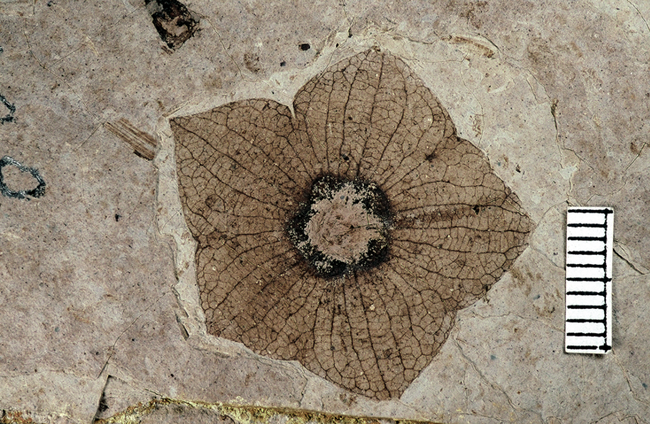
Courtesy of the University of California Museum of Paleontology Florissantia speiriiThis fossil preserves a calyx that matured into a fruit. It belongs to an extinct genus of the cocoa family. 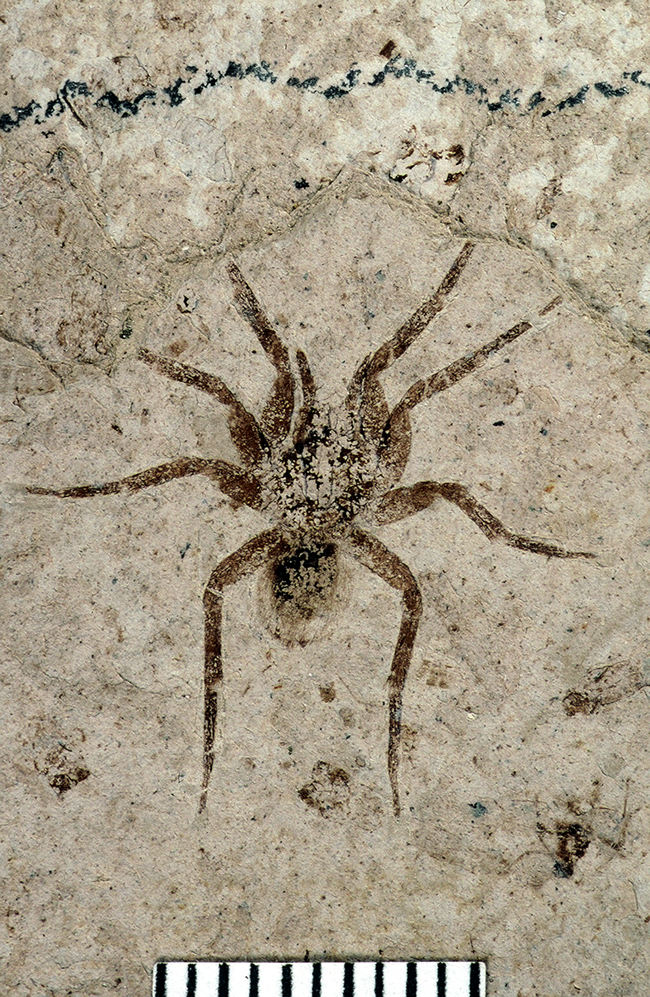
Courtesy of the Department of Invertebrate Paleontology, American Museum of Natural History Lycosa florissantiThis wolf spider, like its modern relatives, hunted its prey on the ground. It most likely lived on the forest floor under rocks and plants. 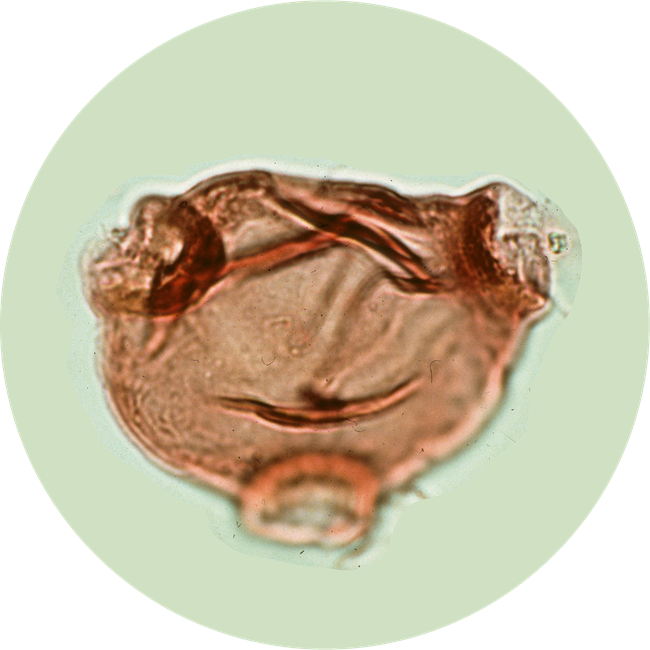
Hugh Wingate, provided courtesy of Doug Nichols 
Stop 2: Arc of Heritage
Click her to progress to the next stop. 
Virtual Tour Homepage
Explanation of the virtual tour and links to all stops. 
Stop 4: The Land Provides
Click here to go to Stop 4. |
Last updated: December 31, 2021
